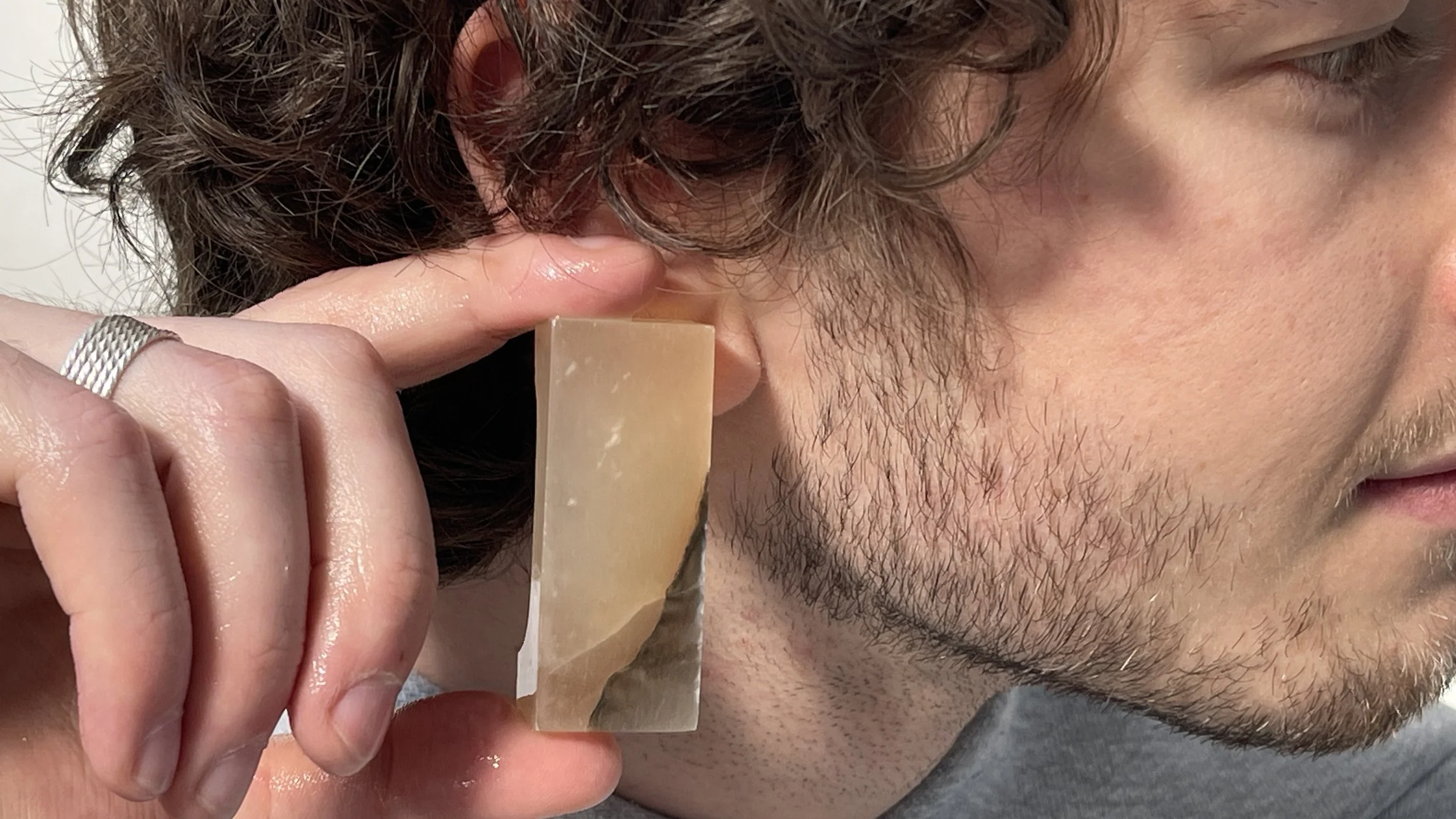1.9—4.5
Carved from serpentine stone sourced in Zimbabwe — a material long used in local sculptural traditions. Its dense,
fine-grained texture makes it durable, but also slow to yield — shaping it is a process of patience.The specific type used here is known for its deep green coloration, intersected by natural veins and fibers in varying shades of brown — from warm ochre to near black. These mineral patterns are formed over time by shifts in pressure and temperature deep within the earth, making each piece of stone geologically and visually singular. The serpentine used was quarried in small batches, often by hand, and selected for its structural integrity as well as surface character.







